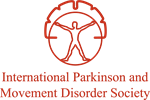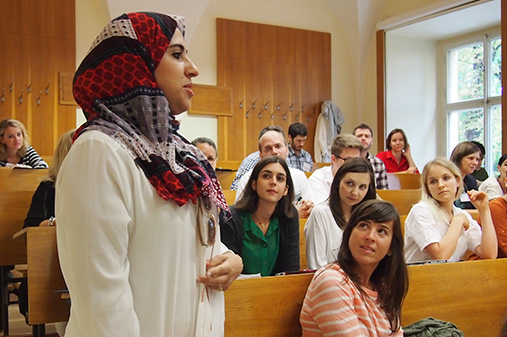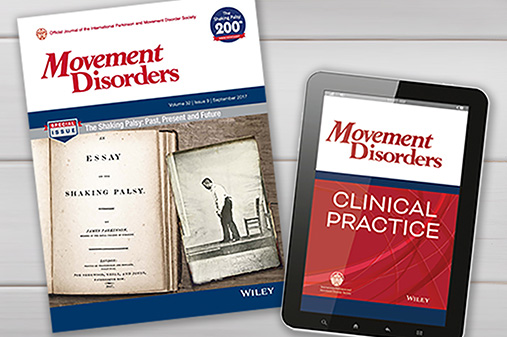Ending Parkinson’s Disease: A Prescription for Action - An Interview with the Authors
The Moving Along Editorial Board members had the opportunity to preview the new book, Ending Parkinson’s Disease: A Prescription for Action, and compiled the following questions for the authors.
How did you come together, as authors, to write this book? What inspired you to write it?
The book’s genesis was the World Without Parkinson’s event, celebrating the bicentennial of Dr. James Parkinson’s description of the disease. From that event, Bas and Ray wrote a piece in JAMA Neurology called (courtesy of Michael) “The Parkinson Pandemic,” which was well received by the community. With the participation and encouragement of Todd Sherer, the CEO of the Michael J Fox Foundation, we decided to write the book. We drew parallels to how society previously addressed polio, HIV, and breast cancer and sought to apply those lessons to the fight to end Parkinson’s disease.

What is this book aiming to achieve?
We hope to lay out the path necessary to prevent and end Parkinson’s disease. As a community of researchers and clinicians dedicated to individuals affected by Parkinson’s disease, we should be judged by how well we respond to the challenge. That challenge is to decrease the number of people developing the disease (through prevention) and to reduce the burden for those who are already affected (through better care and treatment).
Besides Parkinson’s disease patients, what other audience is the book is targeting?
Ideally, the book is a roadmap for patients, their families and friends, clinicians, scientists, politicians, industry, payers and activists. Even Parkinson’s specialists will discover many under- and untold stories in the book and will encounter new perspectives from the stories of 40+ individuals affected by the disease. Finally, the book should be a wonderful introduction to the field for students, residents, and fellows.
How did you decide on the title “Ending Parkinson’s Disease: A Prescription for Action”?
Our great editor, Colleen Lawrie at Public Affairs, pushed for a hopeful and bold title. The subtitle includes a prescription, which is broader and contains a call to action for all of us.
Can you elaborate on the concept and definition of Parkinson’s disease as a pandemic? Can this terminology create more confusion?
The word pandemic derives from Greek roots (e.g., pan is all, demos is people). It was first used in the 19th century, and the original definition was not limited to infectious diseases. We recognize now that the modern word almost exclusively uses the word for infectious outbreaks, such as the unfolding COVID-19 pandemic.
But when you consider it, Parkinson’s disease fulfills all other criteria to qualify as a pandemic. First, Parkinson’s disease is the world’s fastest growing neurological disorder, even faster than Alzheimer’s. The number of people with the condition has more than doubled globally in the last 25 years, and absent change will double again in the coming generation. Second, rates of the disease, adjusted for age, are increasing in virtually every part of the world and have doubled in China. Third, no one is immune to the condition: Parkinson’s disease affects both men and women, from all backgrounds, and although the incidence rises with age, even young people can be affected. Finally, as with any other pandemic, the Parkinson’s one has a tremendous impact, both on affected individuals and on society.
As such, even though Parkinson’s is a non-infectious disease, it does constitute a real pandemic. Importantly, our goal was to raise awareness and open the dialogue, and obviously not to create a new controversy. What is undeniable is the rise of Parkinson’s and its toll on individuals, families, and societies around the world. We want people to focus on these issues.

How can the #ParkinsonPACT be implemented, when there is so much that we do not know or understand about Parkinson’s disease?
We know quite a bit about Parkinson’s. Twenty years ago, Dr. Caroline Tanner and colleagues demonstrated that environmental factors contributed to the majority of cases. Numerous studies in several parts of the world conducted by many members of the MDS have linked certain pesticides and some industrial solvents to Parkinson’s disease. Yet, many of these factors are still in use and contaminate the air we breathe, the food we eat, and the water we drink. We did not know critical elements of the PACT to treat polio or HIV when we started down that road. We now realize that Parkinson’s disease is no different and that the #ParkinsonPACT can benefit from the lessons learned in the fields of polio and HIV.
There is no doubt that today we can be bold, charismatic, and disruptive by creating a “PACT” to Prevent as many cases of Parkinson’s disease as possible, to Advocate for better policies, to Care as best as we can for all affected, and to Treat the condition optimally with existing and novel therapies. We have the ability to execute such a plan… Now we just need the will!
Can you elaborate more on the role exercise may have in prevention of Parkinson’s disease, based on two studies published in 2018?
Two large studies of U.S. military veterans (n=7,000) and participants in a cancer prevention study (n=140,000) demonstrated that vigorous exercise (3.5 to 4 hours/week of running or swimming) in your 40s and 50s may possibly reduce your subsequent risk of developing Parkinson’s a decade later by 20% or more. These results need replication, and there are many unanswered and critical questions the field should and will answer.
How can ECHO or telemedicine improve Parkinson’s disease care in rural areas and lower income countries? Please extend as well to current experience with COVID-19 pandemic.
We are learning a lot from the COVID-19 pandemic. One lesson is that we can use telemedicine globally to bring care into the homes of most anyone with Parkinson’s disease (and many other movement disorders). Project ECHO, developed at the University of New Mexico, uses video conferencing to connect specialists to remote general practitioners to enhance their ability to care for patients with complex diseases in their communities. Developed initially for hepatitis C, it can be applied to Parkinson’s and other movement disorders. The silver lining of COVID-19 is that it has finally opened the door for telemedicine for Parkinson’s on a global scale. We can now provide more care in the home, where it is often most wanted and needed.
What kind of additional resources would be required to face this “pandemic”?
We are going to need more resources, including money. The large investments the NIH (currently $3 billion/year) and other funders made to fight HIV changed the course of the disease and prevented millions from ever developing the disease. Last year, the NIH spent $224 million on Parkinson’s. That is not going to be enough to alter the course of a disease that now affects over a million Americans. We need to lobby for a 10-fold per year increase. Beyond funding, MDS can play a crucial role in its ongoing effort to globally train and educate more professionals, so more individuals with Parkinson’s and their families can receive expert care.
Is there really hope on the horizon?
There is always hope, but hope must be created by our energy, enthusiasm and perseverance. In the 1950s, millions of Americans mailed dimes to the White House and ultimately raised millions of dollars to develop a vaccine for polio, which previously closed swimming pools, houses of worship, and community centers. In the 1980s, an unknown virus caused a rapidly fatal disease. In the absence of a federal response, a group of HIV activists in New York adopted a motto of “Silence=Death.” They blocked the streets of New York, shut down the New York Stock Exchange, occupied the FDA, and operated their own shadow health care system. Fifteen years later, protease inhibitors were developed. Because of these efforts, individuals infected with HIV now have a near normal life expectancy. Today, we are acting again to address the COVID-19 pandemic. If we confront Parkinson’s disease with the same vigor, we will can pave the road toward ending this debilitating disease.
Should Movement Disorder Specialists start taking a different clinical approach when addressing Parkinson’s disease?
We should all recognize that our current investment in and approach to Parkinson’s disease is not working. The Movement Disorder Society was founded in 1985. Since that time, the number of people with Parkinson’s has more than tripled. We have advanced knowledge and improved care, but we have had not any major therapeutic breakthroughs this century. We need a prescription for action to change the course of this disease. We outline this path in Ending Parkinson’s Disease (#ParkinsonPACT), and we hope that our generation and that this Society can address one of the great global health challenges of our time.






